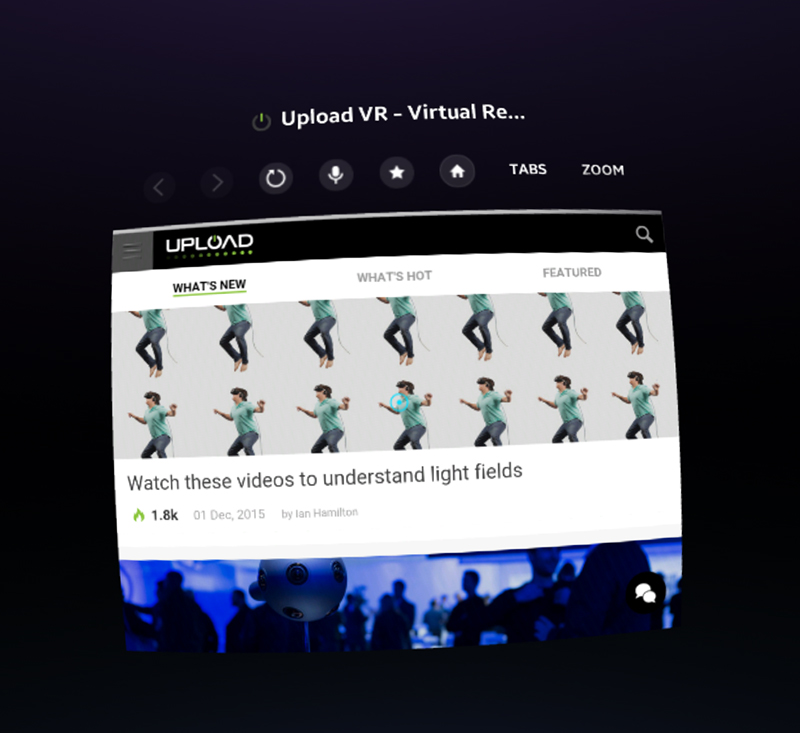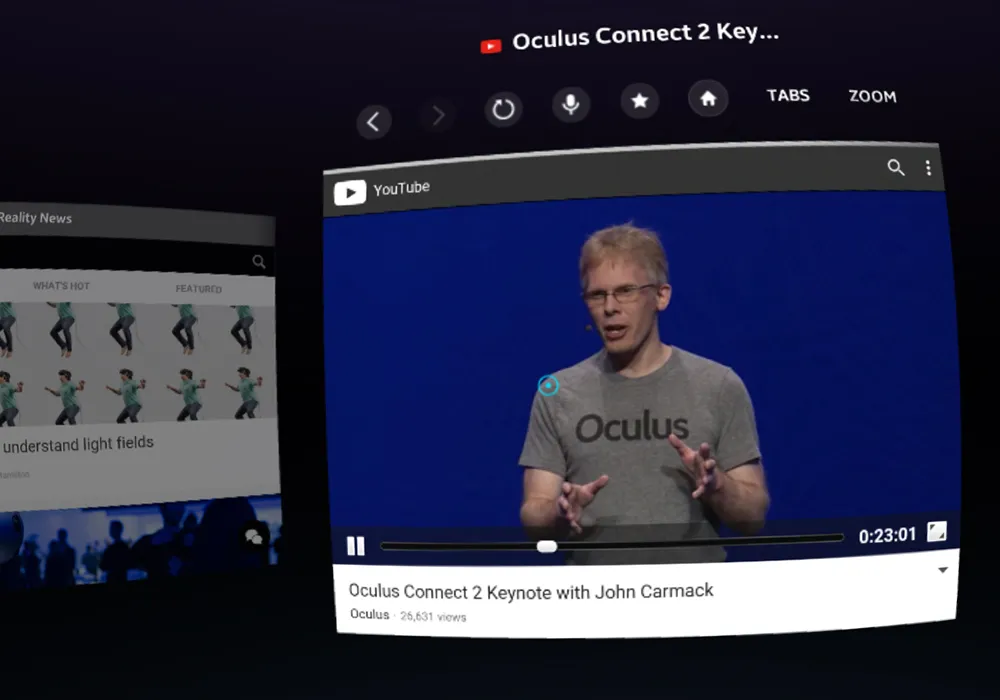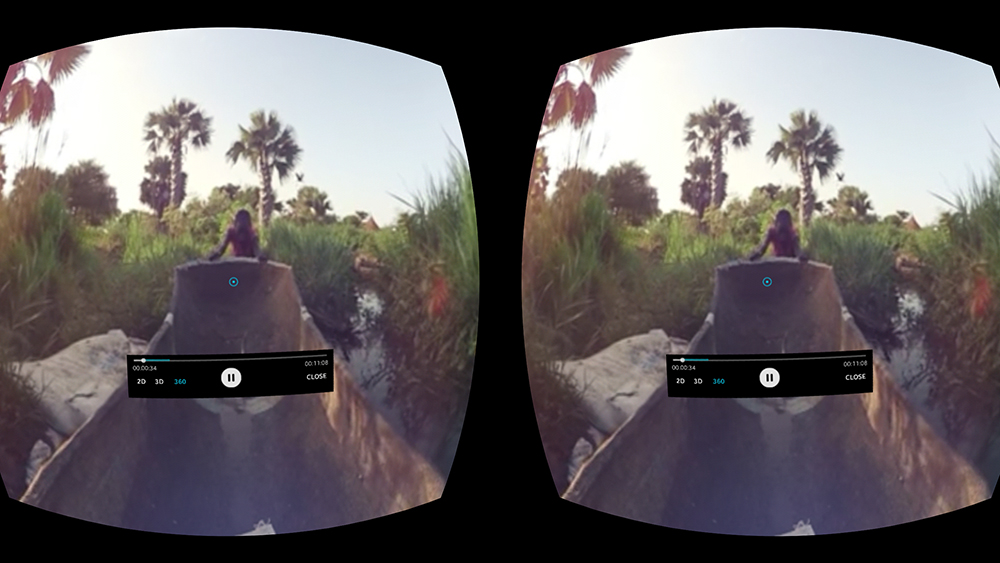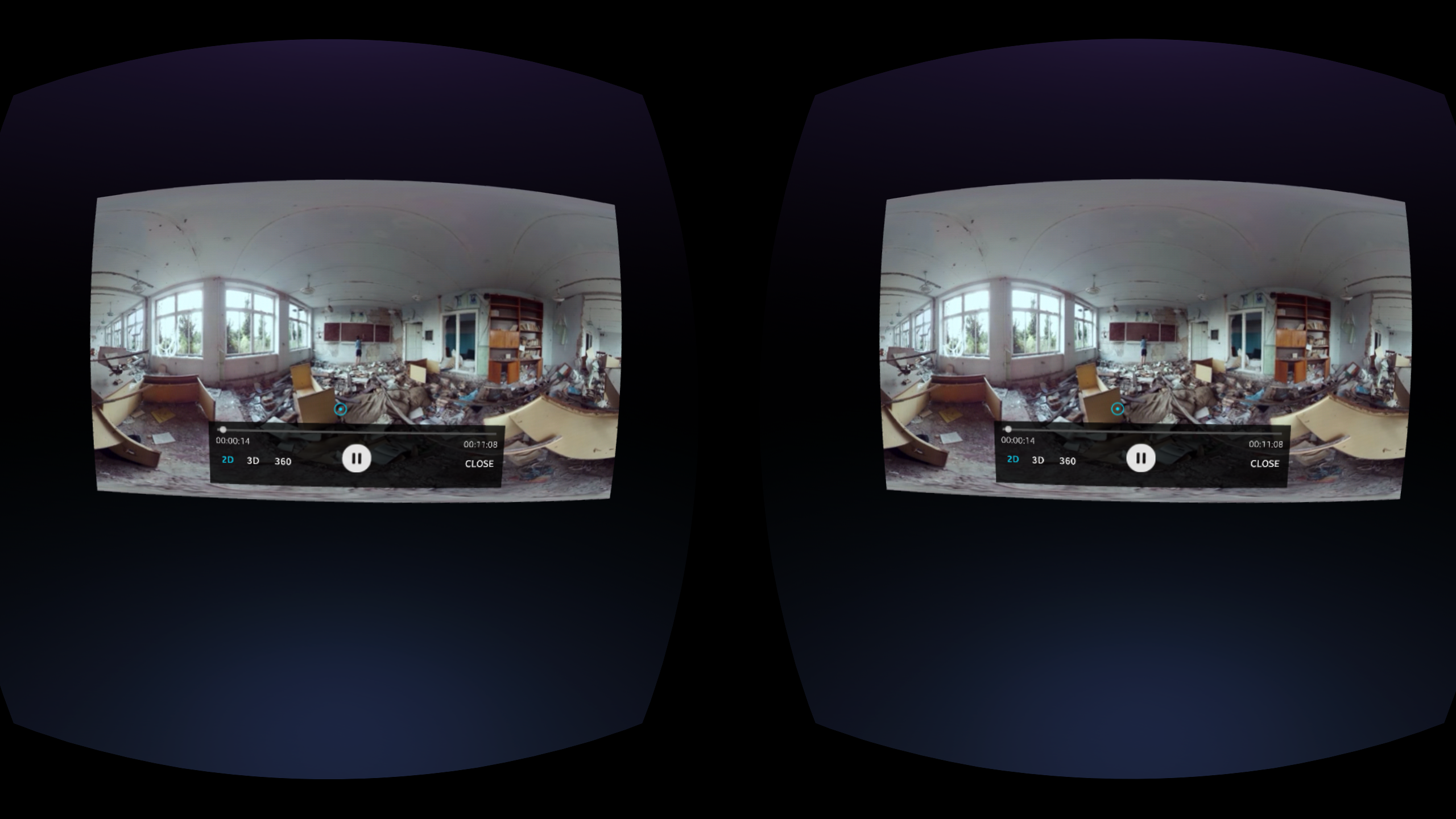The Samsung Internet Beta just dropped into the Oculus store on Gear VR and if you own a headset it’s time for you to go download it now and continue reading this post in VR.
One of the biggest features that Samsung Internet brings is Youtube support for VR, which works beautifully. The entire Youtube library is supported (along with all other HTML5 video) including 3D video and 360º video bringing thousands of awesome pieces of content to the headset. This serves as a great intermediary with no official YouTube app for Gear VR in the works that we know of (John Carmack hinted previously that Oculus and Google, who owns YouTube, might not have the best relationship).
Navigation through the app is handled with the trackpad on the side as well as with some really great voice recognition technology. One of the features with voice search that really stood out was the ability to select from a few choices of what it thinks you may have said. This allows for a better user experience for those who may struggle with having the software recognize their accent.
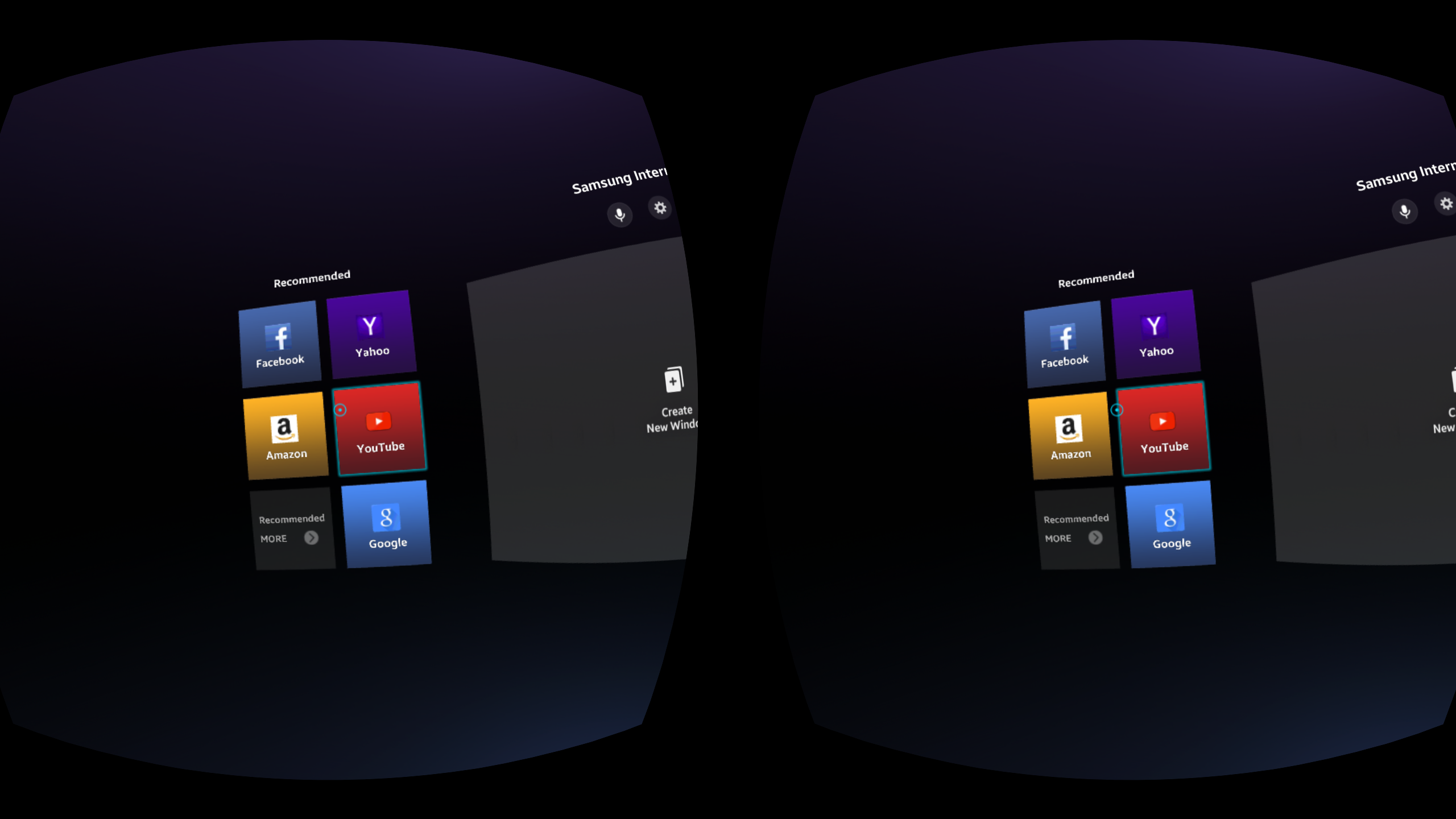
At launch, you are presented with a number of “recommended sites,” including Facebook alongside all the other heavyweights of the Internet including Amazon and Google. Each of the sites default to their mobile view, but that may change in the future.
Speaking with one of the app’s engineers, Laszlo Gombos, we learned that the web engine is based on the Chromium open source project, and is “the exact same version… that is used in Samsung Internet” on mobile. One of the multiple projects that are being worked on under the Chromium umbrella isWebVR, or the display of 3D objects in VR on the Internet. We asked Gombos whether the app would add support for WebVR in the future and he said they are “working together with Mozilla and Google on the upcoming WebVR standard” and that they expect support to be added as an experimental feature “in upcoming product releases.” Imagine being able to actually step inside Amazon, rather than just view it, WebVR content has the potential to redefine the way we think about what a web page could be.
Overall, we walked away impressed by the current iteration of the app, but it is a stepping stone for what is next. Right now it is about navigating and browsing standard web content (along with some 360º videos), but in the future the app could help transition us toward a new way of exploring the web in VR.
